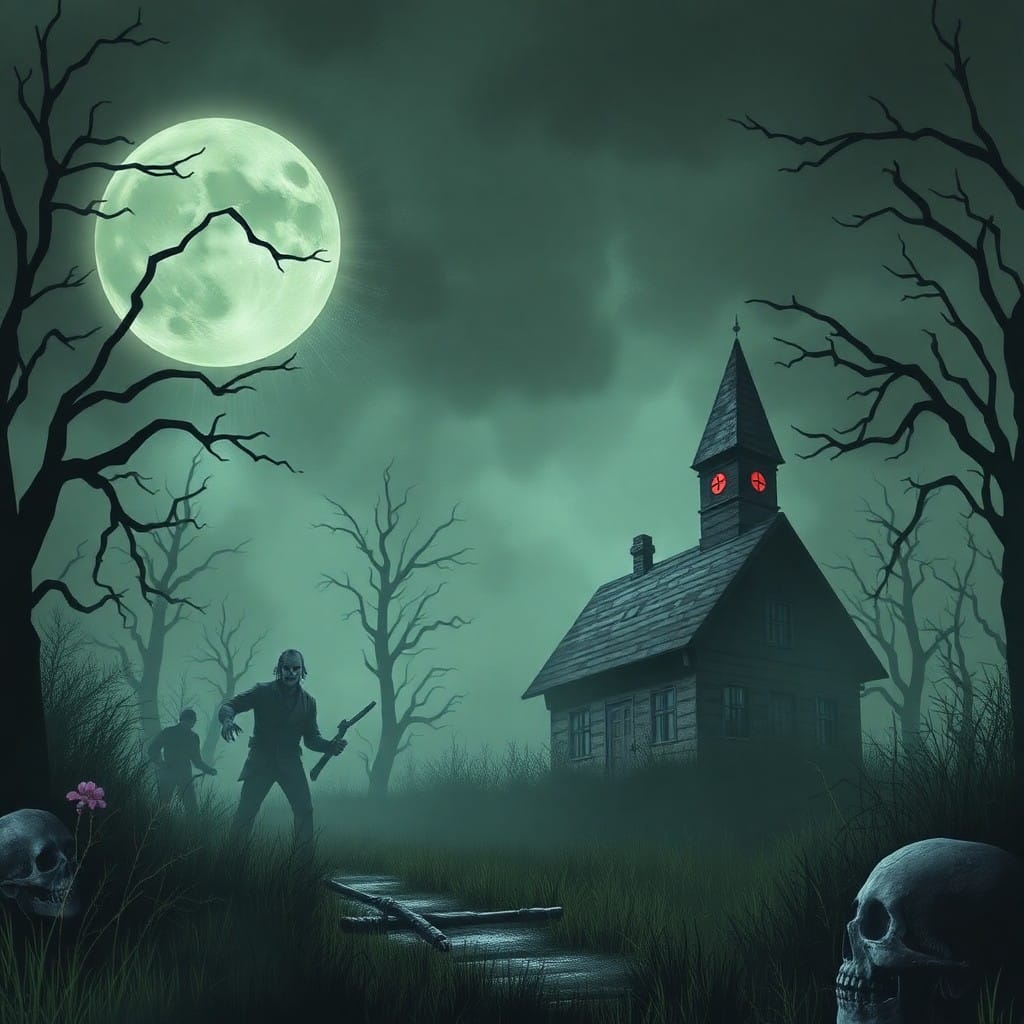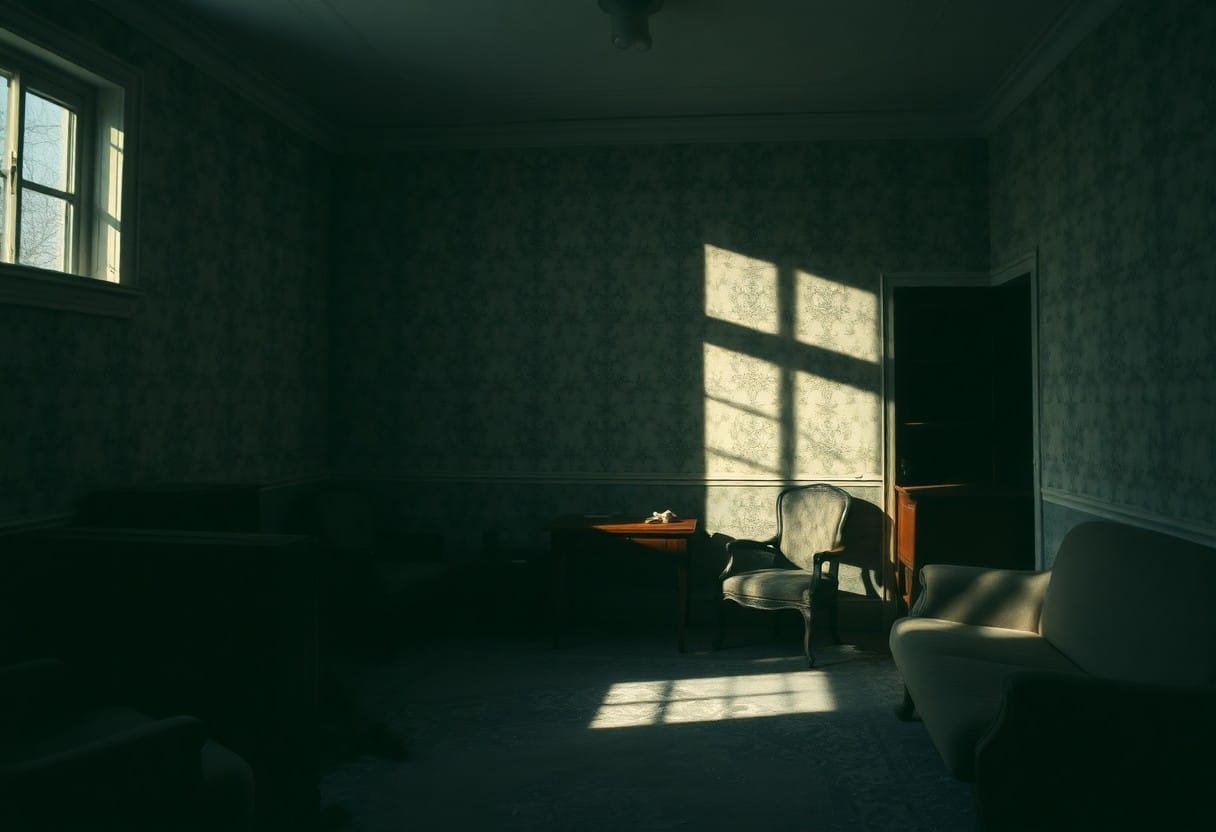Creating Atmosphere – How Horror Games Keep You on Edge

Most horror games excel at creating an immersive atmosphere that heightens your sense of dread and keeps you on the edge of your seat. By cleverly using elements like sound design, lighting, and environmental storytelling, these games manipulate your emotions and senses. In this guide, you will explore the key techniques and psychological tactics that developers employ to ensure that every creak, shadow, and tense moment resonates deeply with you, drawing you further into the terrifying world they’ve crafted.
Key Takeaways:
- Sound Design: The use of eerie soundscapes and sudden audio cues amplifies tension and heightens awareness.
- Visual Aesthetics: Dark, unsettling environments and unexpected visual elements contribute to a feeling of dread and uncertainty.
- Narrative Depth: Compelling storylines and character development create emotional investment, making players more susceptible to fear.
- Unpredictability: Incorporating unpredictable events and AI behavior keeps players on their toes and enhances suspense.
- Player Agency: Offering choices and consequences lets players feel responsible for their fate, increasing anxiety and immersion.
1. Use unsettling sound effects to enhance tension.
2. Employ dark lighting to create fear and uncertainty.
3. Integrate unexpected jump scares within gameplay.
4. Design eerie landscapes that evoke dread and suspense.
5. Include limited resources to amplify survival pressure.
6. Craft a compelling narrative to immerse players deeply.
Types of Atmosphere in Horror Games
While horror games utilize a variety of atmosphere types, each contributes to your overall experience. These atmospheric elements can include:
| Psychological | Tension builds through unsettling themes and character perspectives. |
| Isolation | The feeling of being cut off from help or safety intensifies fear. |
| Supernatural | Unexplainable phenomena create an atmosphere of dread and mystery. |
| Gore | Graphic imagery provokes shock and anxiety in your gameplay. |
| Environmental | Encounters with unsettling surroundings amplify your sense of danger. |
The right combination of these elements keeps you engaged and on edge.
Visual Elements
One of the most immediate ways horror games affect your perception is through visual elements. The use of dark colors, distorted images, and unsettling environments creates a sense of foreboding. Shadows and lighting effects often lead your eyes towards potential threats, amplifying your anxiety and anticipation as you explore.
Sound Design
Some of the most effective moments in horror games come from their sound design. Crescendoing scores, eerie whispers, and ominous background noises enhance the overall mood and keep you alert to hidden dangers. The impact of strategically placed sound cues can make you feel vulnerable and instinctively react to what’s happening around you.
Understanding sound design in horror games reveals just how profoundly audio influences your experience. It can make your heart race in anticipation or instill a deep sense of dread as unsettling noises echo in the background. Well-executed soundscapes create an atmosphere that enhance the feeling of fear, so each creak or whisper feels amplified and personal. Your reactions are not just physical; the sounds resonate within you, leaving an emotional mark long after the game is over.
Narrative Techniques
Horror games often rely on narrative techniques to keep you invested in the unfolding story. Unique storytelling elements, such as unreliable narrators or non-linear timelines, create an immersive experience that elicits fear and curiosity about what will happen next.
Games that utilize narrative techniques can heighten your engagement and emotional investment in the plot. Meticulously crafted stories immerse you into disturbing scenarios, where each choice may lead to unforeseen consequences. The uncertainty of how the narrative might twist or turn can keep you feeling uneasy as you progress, making every decision carry weight and amplifying that palpable sense of dread throughout your experience.
Key Factors Influencing Player Experience
If you want to understand what keeps players engaged and on edge in horror games, it’s vital to consider various factors that influence their experience. These elements help create the immersive dread that characterizes horror gaming:
- Sound design
- Visual aesthetics
- Gameplay mechanics
- Narrative depth
- Player agency
Knowing these factors allows you to appreciate the complexity behind the gameplay and why it resonates so effectively with players.
Environmental Design
Some horror games achieve a compelling atmosphere through meticulous environmental design, utilizing settings that evoke a sense of isolation or danger. Dark corridors, eerie landscapes, and unsettling architecture immerse you in the fear the game aims to convey.
Psychological Triggers
To enhance the player’s experience, horror games often employ psychological triggers that tap into your primal fears. These include the fear of the unknown, isolation, and vulnerability, which pull you deeper into the narrative and gameplay.
Plus, horror games often utilize techniques such as auditory cues and unexpected visual stimuli to catch you off guard, amplifying your anxiety. The unpredictability of a lurking threat keeps your heart racing, making you feel like you’re always on the brink of terror, which further heightens the overall experience.

Tips for Enhancing Atmosphere in Game Design
Unlike many other genres, horror games thrive on creating an atmosphere that keeps players constantly on edge. To elevate your game’s intensity and immersion, consider the following:
- Utilize environmental storytelling
- Incorporate eerie soundscapes
- Play with lighting and shadows
- Implement unexpected events
- Balance action with quiet moments
Knowing how to weave these elements together can lead to an unforgettable gaming experience that lingers long after the screen fades to black.
Building Tension
For effective tension-building, pacing is key. Draw your players into the narrative gradually, allowing moments of calm to be interrupted by sudden frights or encounters. You can use foreshadowing to hint at impending threats, keeping players anticipating what comes next and increasing their emotional investment in the experience.
Using Silence Effectively
Effectively employing silence in your game can heighten the sense of dread and anticipation. It can create a stark contrast between action and stillness, making players acutely aware that something is lurking just beyond their perception.
Design your game’s audio landscape to include strategically placed silent moments. This absence of sound can amplify the players’ feelings of vulnerability and uncertainty. By removing background noise during significant scenes, you allow players to focus on their own breathing, heartbeat, and the oppressive atmosphere you’ve cultivated, making the eventual sound cue much more impactful.
Incorporating Unpredictability
To keep your players engaged and unsettled, weave unpredictability into your game’s fabric. Use random events or unexpected enemy behavior to ensure players never feel completely secure, creating an environment where the balance of power shifts constantly.
Plus, regularly changing the rules of engagement can keep your games fresh. Introduce mechanics that allow for surprise encounters or shifts in the environment, forcing players to adapt continually. When they think they have mastered one aspect of the game, turn it on its head with a revelation or twist that they didn’t see coming, enhancing the overall tension and atmosphere.
Step-by-Step Guide to Creating an Immersive Atmosphere
Not all horror games are created equal; some manage to grip players with a sense of dread that lingers long after the game is over. To design a captivating atmosphere, consider these imperative elements:
| Element | Description |
|---|---|
| Sound Design | Utilize unsettling audio cues, eerie whispers, and sudden silences to amplify tension. |
| Lighting | Play with shadows and dim lighting to create an uncertain environment. |
| Environmental Storytelling | Incorporate small details in the setting to narrate a backstory without words. |
| Character Design | Craft relatable yet haunting characters that can evoke empathy or fear. |
Concept Development
On your journey to create an immersive horror atmosphere, start with concept development. This phase involves brainstorming themes, setting, and narrative elements that enhance fear. By outlining your ideas, you can establish a coherent vision that informs every aspect of the game design.
Prototyping and Testing
If you want your horror game to resonate, prototyping and testing are fundamental. This process allows you to implement your ideas and assess their effectiveness. Testing your atmosphere provides insights into what genuinely unsettles players, helping you refine your approach.
A robust prototyping phase involves creating playable versions of your game to evaluate soundscapes, lighting, and environmental details. Playtesting allows you to gather feedback from real players, revealing what elements keep them engaged and on edge. Use these insights to fine-tune your atmosphere, ensuring that each aspect, from sound design to environmental storytelling, works in harmony to create the desired emotional impact.
Pros and Cons of Atmospheric Horror Elements
Keep in mind that while atmospheric horror elements enhance the gaming experience, they come with both advantages and disadvantages. Understanding these pros and cons allows you to appreciate the balance necessary for effective horror immersion.
| Pros | Cons |
|---|---|
| Increased immersion | Can cause frustration |
| Heightened tension | Overwhelming sensory input |
| Enhanced storytelling | Risk of disengagement |
| Stronger emotional responses | May rely on clichés |
| Memorable experiences | Pacing issues |
Advantages for Player Engagement
The unique combination of visuals, sound, and narrative in atmospheric horror elements keeps you deeply engaged. When these aspects work in tandem, they create an immersive world that pulls you in, making each moment feel intense and personal. You become invested in the story and environment, prompting you to explore further and overcome challenges with heightened emotional stakes.
Potential Drawbacks in Gameplay
Consistent atmospheric horror can sometimes hinder gameplay due to its intensity. The immersive experience may lead to overwhelming sensations that distract or disorient you, making it hard to focus on objectives. Additionally, pacing can suffer if the game overly relies on atmospheric elements, causing periods of inactivity that might feel tedious.
Further, if the atmosphere relies heavily on familiar tropes or jumpscares, you might start to feel disengaged from the experience. If the game’s tension becomes suffocating, it can lead to frustration rather than enjoyment. Balancing these elements is crucial for maintaining your engagement without pushing you into exhaustion or boredom.
Summing up
With these considerations, you can appreciate how horror games expertly craft an atmosphere that keeps you on edge. By utilizing sound design, visual aesthetics, intuitive gameplay mechanics, and unsettling narratives, these games draw you into a world where tension and fear thrive. As you navigate through eerie environments and face unexpected threats, each element works in harmony to immerse you in a chilling experience that lingers long after the game ends.
FAQ
Q: What role does sound design play in horror games?
A: Sound design is integral in horror games as it enhances the atmosphere and builds tension. Ambient sounds, such as creaking floorboards, distant whispers, or sudden loud noises, can create a sense of dread and alert players to potential dangers. Additionally, the use of silence can be equally effective, heightening the player’s anxiety and making them more alert to their surroundings.
Q: How does lighting contribute to the atmosphere in horror games?
A: Lighting sets the tone and mood in horror games. Dimly lit environments, flickering lights, and shadows can obscure vision and create uncertainty. This manipulation of light and dark regions increases tension, as players often fear what they can’t see. By using limited visibility and sudden bursts of light, developers can surprise players and induce fear, making them feel unsettled throughout the gameplay.
Q: In what ways do narrative elements enhance the horror experience?
A: Narrative elements are important in making the story immersive and engaging. Well-crafted backstories, character development, and psychological themes can deepen emotional connections and investment in the game. Players are more likely to feel fear when they understand the stakes, empathize with characters, and experience a progression of horror that is both believable and unsettling. These elements work together to create a compelling atmosphere that keeps players on edge.
Q: What techniques do horror games use to build player unpredictability?
A: Building unpredictability is key in horror games, which often utilize random events, unexpected enemy behavior, and variable game mechanics. When players are unsure about what might happen next, it amplifies their anxiety and sense of foreboding. Developers may implement scripted events that break players’ expectations or change enemy patterns, compelling players to stay alert and adapt to new challenges throughout the gameplay experience.
Q: How does the environment design impact player immersion in horror games?
A: Environment design plays a critical role in immersing players in the horror experience. Creatively designed spaces, filled with unsettling details or designed to be labyrinthine, can enhance the feeling of isolation and vulnerability. Interactive elements, atmospheric textures, and utilitarian obstacles contribute to a sense of realism that draws players in. Players become more invested in the game world, making them more susceptible to fear and tension as they navigate through eerie and unsettling environments.



